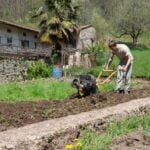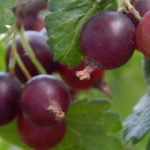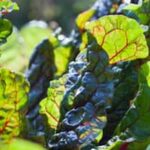Are you wondering how to prepare tap water for vegetable gardens? Water is a critical element in the success of any vegetable garden, but using unfiltered tap water can have negative effects on your plants. In this article, we will explore the importance of water in vegetable gardens and provide you with essential tips on preparing tap water to ensure the health and growth of your veggies.
Assessing the quality of your tap water is the first step in understanding how to prepare it for your vegetable garden. We will discuss key factors to consider when evaluating your tap water quality and provide you with insights on identifying potential issues that may affect your plants.
Once you understand the quality of your tap water, we will delve into different methods and tools for filtering it. From simple filtration systems to more advanced techniques, we will guide you through the best practices for removing harmful contaminants from your tap water, ensuring that your vegetables receive clean and safe hydration.
Understanding how to adjust pH levels in tap water is also crucial for optimal vegetable growth. We will provide valuable tips on balancing pH levels in your tap water, allowing your plants to absorb essential nutrients effectively. Stay tuned as we explore all these topics and more in our comprehensive guide on preparing tap water for vegetable gardens.
Assessing Your Tap Water Quality
When preparing tap water for your vegetable garden, the first step is to assess the quality of your tap water. This is important because the quality of your water can affect the health and growth of your vegetables. Here are some key factors to consider when assessing your tap water:
1. Water Hardness: Test your tap water for hardness, which refers to the level of minerals like calcium and magnesium. Hard water can affect soil pH and nutrient availability for plants.
2. Chlorine Levels: Check the chlorine levels in your tap water, as chlorine can harm beneficial microorganisms in the soil and affect plant growth.
3. pH Levels: Determine the pH of your tap water, as this can impact nutrient availability for your vegetables. Ideally, you want a slightly acidic to neutral pH for most vegetables.
After assessing these factors, you can determine if any adjustments need to be made before using tap water for your vegetable garden. If there are issues with water hardness, chlorine levels, or pH levels, there are various methods and tools available to filter and adjust tap water for optimal vegetable growth. By understanding and addressing the quality of your tap water, you can ensure the health and success of your vegetable garden.
Filtering Tap Water for Vegetable Gardens
Filtering tap water for your vegetable garden is an essential step in ensuring the health and success of your plants. Even though tap water is safe for human consumption, it can contain chemicals and pollutants that may negatively impact the growth of your vegetables. Fortunately, there are various methods and tools available to effectively filter tap water for use in your garden.
Carbon Filters
One of the most common and effective methods for filtering tap water is by using carbon filters. These filters work by absorbing impurities and contaminants from the water, including chlorine, pesticides, and other harmful substances. Carbon filters are relatively affordable and easy to install, making them a popular choice for many gardeners.
Reverse Osmosis Systems
For those looking for a more thorough filtration process, reverse osmosis systems are a great option. These systems use a multi-stage filtration process to remove impurities from tap water, producing clean and purified water that is ideal for watering your vegetable garden. While reverse osmosis systems may come with a higher initial cost, they provide high-quality filtered water for long-term use.
Water Filtration Pitchers
If you’re looking for a simple and budget-friendly solution for filtering tap water, consider using a water filtration pitcher. These pitchers contain carbon filters or resin filters that help remove impurities from the water as it passes through. While they may not be as effective as carbon filters or reverse osmosis systems, they can still significantly improve the quality of your tap water for gardening purposes.
By investing in the right methods and tools to filter your tap water, you can ensure that your vegetable garden receives clean and pure water that promotes healthy growth and abundant harvests. Whether you choose carbon filters, reverse osmosis systems, or water filtration pitchers, taking this step will contribute to the overall success of your gardening efforts.
Removing Chlorine and Other Harmful Chemicals From Tap Water for Vegetable Gardens
Understanding the Impact of Chlorine and Other Chemicals
Chlorine is commonly added to tap water as a disinfectant to kill harmful bacteria and pathogens. However, this chemical can also have negative effects on the beneficial microbes in the soil and the overall health of your vegetable garden.
In addition to chlorine, tap water may also contain other harmful chemicals such as fluoride, chloramine, and heavy metals that can impact plant growth and soil health. It is important to understand the potential impact of these chemicals on your vegetable garden in order to take steps to remove them effectively.
Using Dechlorination Methods
One of the most effective methods for removing chlorine from tap water is through dechlorination. This process involves allowing the water to sit for at least 24 hours in an open container before using it on your vegetable garden. During this time, the chlorine will naturally dissipate from the water, making it safe for your plants.
Another option is to use a dechlorinating agent or water conditioner specifically designed for gardening purposes. These products are readily available at garden centers and work by neutralizing chlorine and other harmful chemicals in tap water.
Considering Filtration Systems
In addition to dechlorination methods, consider investing in a filtration system specifically designed for gardening purposes. There are various types of filters available, including activated carbon filters and reverse osmosis systems, that can effectively remove chlorine, chloramines, fluoride, and other harmful chemicals from tap water. While these filtration systems may require an upfront investment, they can provide a long-term solution for ensuring that your vegetable garden receives clean and healthy water free from harmful chemicals.
Removing chlorine and other harmful chemicals from tap water is crucial for ensuring the health and success of your vegetable garden. By understanding the impact of these chemicals, utilizing dechlorination methods, and considering filtration systems, you can prepare your tap water effectively for optimal vegetable growth.
Adjusting pH Levels in Tap Water for Optimal Vegetable Growth
Maintaining the right pH levels in your tap water is crucial for the optimal growth of your vegetable garden. The pH level of water affects the solubility and availability of essential nutrients for your plants. Most vegetables prefer a slightly acidic to neutral pH level, ideally around 6 to 7, so it’s important to test and adjust your tap water accordingly.
To start, you can test the pH level of your tap water using a simple pH testing kit, which can be easily found at any gardening or home improvement store. Once you have determined the pH level of your water, you can then take steps to adjust it if necessary.
If your tap water has a high or alkaline pH level, you can lower it by using organic acidifiers such as vinegar or lemon juice. On the other hand, if your water is too acidic, you can raise the pH level by adding alkaline substances like agricultural lime or wood ash. It’s important to make gradual adjustments and frequently retest the water to avoid drastic changes that could harm your plants.
| Vegetable | Ideal pH Range |
|---|---|
| Tomatoes | 0-7.0 |
| Carrots | 5-7.0 |
| Lettuce | 0-7.0 |
| Cucumbers | 5-7.0 |
Choosing the Right Watering Schedule and Techniques for Your Vegetable Garden
When it comes to choosing the right watering schedule and techniques for your vegetable garden, it’s important to consider the specific needs of the plants you are growing. Different types of vegetables have different water requirements, so it’s essential to tailor your watering schedule to meet those needs. For example, leafy greens like lettuce and spinach require more frequent watering, while root vegetables like carrots and beets need less frequent but deeper watering.
One of the key factors to consider when determining a watering schedule is the climate in your area. Vegetables in hot and dry climates will likely need more frequent watering than those in cooler and wetter climates. Additionally, the type of soil in your garden can also impact how often you need to water. Sandy soil drains quickly and may require more frequent watering, while clay soil retains moisture and may need less frequent watering.
In addition to considering the frequency of watering, it’s also important to think about the best techniques for delivering water to your vegetable garden. Drip irrigation systems are a popular choice for many gardeners because they deliver water directly to the roots of plants, minimizing evaporation and reducing water waste. Mulching around plants can also help retain moisture in the soil, reducing the need for frequent watering.
| Vegetable Type | Ideal Watering Schedule |
|---|---|
| Leafy Greens (Lettuce, Spinach) | 2-3 times per week |
| Root Vegetables (Carrots, Beets) | 1-2 times per week |
Using Rainwater and Drip Irrigation Systems for Vegetable Gardens
When it comes to watering your vegetable garden, using rainwater and drip irrigation systems can be extremely beneficial. Not only are these methods environmentally friendly, but they can also help to conserve water while ensuring that your plants receive the moisture they need to thrive. Here are some reasons why you should consider incorporating rainwater and drip irrigation into your vegetable garden routine:
1. Rainwater harvesting: Collecting rainwater is a simple and cost-effective way to provide water for your vegetable garden. By installing a rain barrel or collection system, you can capture and store rainwater for later use, reducing your reliance on tap water.
2. Drip irrigation systems: Drip irrigation delivers small, steady drips of water directly to the base of each plant, minimizing waste through evaporation or runoff. This efficient method not only conserves water but also helps to prevent disease by keeping foliage dry.
3. Benefits of using these methods: Utilizing rainwater and drip irrigation can lead to healthier, more productive vegetable plants. With better moisture control and reduced exposure to harmful chemicals often found in tap water, your garden will have a greater chance of thriving.
Overall, incorporating rainwater harvesting and drip irrigation into your watering routine can result in a more sustainable and successful vegetable garden. By making use of these methods, you can contribute to environmental conservation while providing optimal care for your plants.
Conclusion
In conclusion, ensuring the health and success of your vegetable garden with properly prepared tap water is essential for maximizing the growth and yield of your plants. By understanding the importance of water quality, assessing your tap water, filtering out harmful chemicals, and adjusting pH levels, you can create an optimal environment for your vegetables to thrive.
Choosing the right watering schedule and techniques, as well as considering alternative water sources such as rainwater and drip irrigation systems, can further contribute to the overall health of your vegetable garden. By taking these steps to prepare tap water for your garden, you are investing in the long-term success of your plants and ultimately increasing the quality and quantity of your harvest.
In essence, proper preparation of tap water is a crucial component of successful vegetable gardening. By implementing these strategies, you can ensure that your plants receive the best possible care and environment for growth. With a little effort and attention to detail in preparing your tap water, you can enjoy a bountiful and thriving vegetable garden throughout the growing season.
Frequently Asked Questions
How Do I Make Tap Water Safe for Plants?
Making tap water safe for plants can be done by letting the water sit out for 24 hours before using it to allow chlorine to evaporate. Another method is to use a water filtration system to remove any harmful chemicals or minerals from the tap water.
Adding compost or organic matter to the soil can also help neutralize any contaminants in the water, making it safer for plant growth.
Can I Use Tap Water for My Vegetable Garden?
Tap water can be used for a vegetable garden, but it’s important to consider the quality of the tap water and how it might affect the plants. As mentioned earlier, letting the tap water sit out for 24 hours or using a filtration system can help make it safer for vegetables.
It’s also a good idea to periodically test the soil and monitor plant growth to ensure that the tap water isn’t negatively impacting the garden.
How Do You Dechlorinate Tap Water for Plants?
Dechlorinating tap water for plants can be achieved by using a dechlorination product that specifically removes chlorine from the water. Another method is to boil the tap water and let it cool down before using it on plants, as boiling will cause chlorine to evaporate.
Additionally, some gardeners use vitamin C tablets or powdered ascorbic acid to neutralize chlorine in tap water before watering their plants.

If you’re looking to get into vegetable gardening, or are just looking for some tips on how to make your current garden better, then you’ve come to the right place! My name is Ethel and I have been gardening for years. In this blog, I’m going to share with you some of my best tips on how to create a successful vegetable garden.





